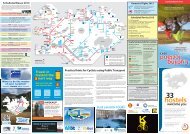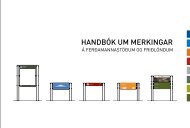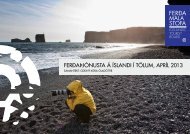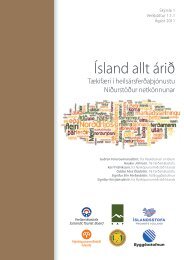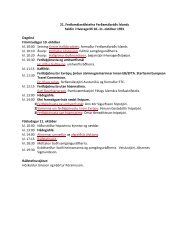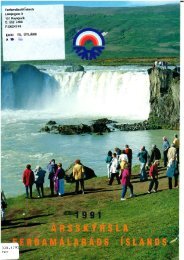Untitled
Untitled
Untitled
Create successful ePaper yourself
Turn your PDF publications into a flip-book with our unique Google optimized e-Paper software.
materiality. Yet, you are able to relate also to that material surrounding in<br />
ways that take you beyond your pure physical engagement through bodily<br />
sensory perception, perhaps by signifying what you see as something<br />
astonishing. This illustrates that:<br />
The material world itself does not convey meaning; it is language<br />
systems that express meaning to members of particular social groups by<br />
representing concepts in certain terms (Hunter 2008, p. 356).<br />
There are obviously many different ways of naming things-andrelations<br />
and depending upon a whole set of factors, ranging from<br />
individual to collective, we may assign meanings in both similar and<br />
different ways. According to semiotics this is inevitably so, because the<br />
relationship between signifier and signified is not fixed or given in<br />
language, but instead arbitrary and held together and apart by social<br />
convention. Indeed, it is through social convention that sites and places are<br />
provided with touristic meaning, and, we may add, also the phenomena of<br />
tourism as such. Though bodily movements and travelling have existed for<br />
long, tourism, as we have come to know it, is a recent social convention.<br />
This leads us back to MacCannell, because what he eventually<br />
managed to achieve was symmetry between tourist attractions and a<br />
semiotic definition of the sign, which, in his own words, was “a source of<br />
great personal pleasure (MacCannell 1976/1999, p. 110):<br />
SIGN = (a) represents + (b) something + (c) to someone<br />
------------------------------------------------------------------<br />
(TOURIST) ATTRACTION = (a) marker + (b) sight + (c) tourist<br />
Image 2.6: Sign and (tourist) attraction. 16<br />
A (tourist) attraction is then like a sign, in that it too represents<br />
something to someone. The sign of a tourist attraction is a sight<br />
16 Adopted from MacCannell (1976/1999, p. 110).<br />
23



